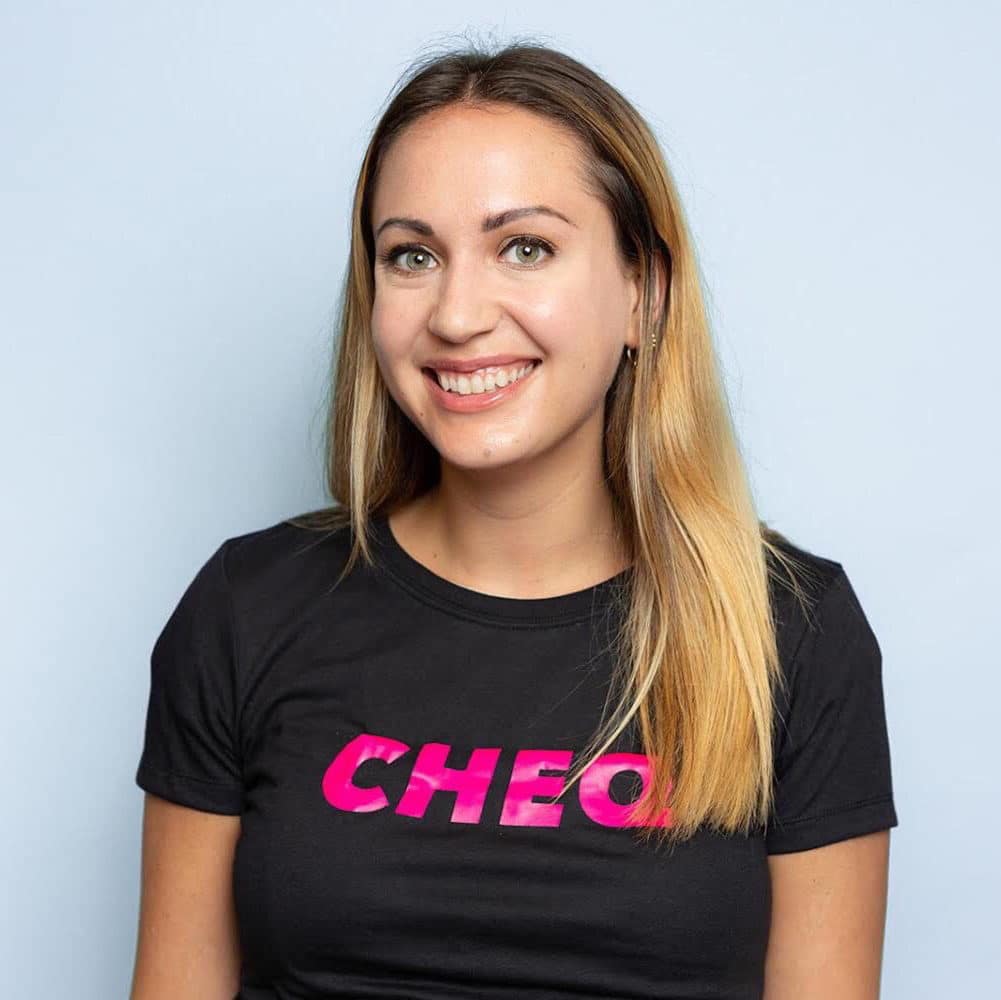What is the Difference Between Paid Search & Paid Social?
Kerry Coppinger
|Marketing | September 01, 2022

When marketers want to reach new personas or nurture existing audiences, oftentimes the conversation turns toward investing in different types of advertising. In today’s world, advertising is an umbrella term that encompasses what seems to be an endless number of channels.
Traditional channels such as out-of-home billboards and in-person events can still be effective, while digital placements continue to offer a targeted approach. Not to mention, marketers have multiple options for each type of advertisement they intend to place. For example, if the department determines they want to start purchasing sponsored content articles, the strategy does not stop there. The team then needs to determine the audience they want to reach, talk to multiple publications and vendors, weigh the possible outcomes and ROI of each campaign, and make educated decisions.
Needless to say, advertising can mean a myriad of different strategies and tactics. In the paid marketing space specifically, there are many types of advertisements, but two of the most popular are paid search and paid social. But what is the difference between the two and how can companies know which one will be most effective for their business? Throughout this article, we discuss the definitions of these terms, the benefits and risks of each, and how to ultimately measure the success of these campaigns.
What is paid search?
This term is defined as any advertising campaigns that are launched on search platforms, and are designed to help the business appear at the top of search engine results pages – also known as SERPs.
By utilizing paid search, organizations can often surpass organic results and drive more traffic to their website. This can be done alongside organic SEO strategies in order to maximize visibility both organically and through advertisements. Paid search campaigns are frequently launched on a pay-per-click, or PPC, model – meaning the advertiser pays an agreed-upon fee when an internet user clicks on one of their advertisements on a SERP.
What are the channels used in paid search?
There are many places on the internet where people enter search queries and land on results pages. Some could even argue that large eCommerce websites that enable users to search for specific keywords could also be involved in the paid search category. However, there are also large enterprise companies that are built on a search-first model and, when it comes to advertising, are unquestionably channels for paid search campaigns. Some of the channels where paid search advertisements are frequently launched are as follows:
- Google Ads (Adwords)
- Microsoft Ads
- Yandex Ads
- Baidu Ads
What are the benefits of paid search?
One of the key benefits of paid search campaigns is being able to show up in search results without delay. While organic search methods require long-term strategic thinking and implementation of search engine optimizations can take weeks or even months to take effect, paid search campaigns can drive results almost immediately. For this reason, paid search campaigns allow marketers to be agile and adjust the keywords and audiences they are targeting rather quickly without waiting long periods of time to determine the effectiveness of their existing campaigns.
Paid search also enables marketers to reach individuals based on their intent, which sometimes can be an indicator of where they are in the funnel. For example, someone who is searching “where to buy a camping tent near me” is further down the purchase funnel than someone who might search “why types of gear do I need to go camping.”
How do companies measure the success of paid search?
Paid search success is measured by several different metrics. Most businesses want to keep their cost per click relatively low, while also driving the highest number of quality conversions. To determine whether metrics cost per click, conversion rates, leads generated, and pipeline contributed are trending positively, many first-time advertisers check industry benchmarks to see where they currently fit. Future goals can then be built off initial reports to track improvements.
It is also important to remember that the metrics each business measures most closely depends on what they are looking to achieve. For example, if top-of-funnel metrics like impressions and clicks are trending positively but conversion rates and pipeline contribution is relatively low, the organization should evaluate whether or not this is a problem. If the ultimate goal of the campaign is to increase revenue then this is a potential issue, but if the campaign was designed simply to raise awareness of a brand, then this might not be as much of a problem.
Want to learn how to protect your paid campaigns? Book a scan with CHEQ.
What is paid social?
This term encompasses any advertisements that are launched on social media platforms. This can include images, videos, articles, text, links, and other forms of media that the advertiser pays to promote.
Oftentimes, this channel is used to get in front of potential customers who otherwise may be unfamiliar with a given brand. Paid social media campaigns can allow the advertiser to target audiences based on their interests, location, or other key characteristics. This type of advertising has a wide variety of approaches, media types, and ways to structure payment for campaigns. As new social media platforms are created, and new types of media become popular, so do the ways advertisers can reach users of these platforms.
What are the channels used in paid social?
As previously discussed, paid social is a massive net of channels and within each channel, there are several different ways to advertise. For internet users who are active on social media platforms, the following list will likely not come as a surprise in terms of key channels that advertisers use to promote their products and services. This list is also expanding rapidly as new trendy platforms enter the arena. Additionally, the ways that advertisers use these platforms is also expanding as affiliates and influencers are enlisted as marketing professionals as well.
- Meta (Facebook, Instagram)
- Snapchat
- TikTok
What are the benefits of paid social?
Paid social campaigns are a great way to reach consumers based on their interests or attributes. While paid search campaigns are largely built around user intent in their search queries, paid social campaigns are more based on personal likes and dislikes.
Paid social audiences are often built by selecting these attributes while building a campaign in order to target members of a social network who fall within one of the advertiser’s personas or customer profiles. Paid social is also an interesting channel to advertisers because of the wide range of options it presents. Different types of content can be built for different social media platforms, and advertisers are not limited to text ads like they are on many search engines.
How do companies measure the success of paid social?
Similarly to paid search, the way businesses measure success on paid social campaigns is largely based on their initial goals. Paid social can be a powerful tool for reaching new audiences, so awareness and engagement metrics like impressions, clicks, follows, likes and shares can be strong indicators of increased interest in a brand.
However, these types of metrics do not necessarily mean the user is ready to make a purchase – they might just enjoy the photos and videos a business is sharing or find their content valuable. If a business wants to drive real revenue from paid social, it’s wise to consider what platforms their audiences use when they are looking to make purchases or gain product information and adjust their strategies accordingly.
How do I know if paid search or paid social is right for my business?
As mentioned previously, some channels resonate with certain organizations because of their department or company goals, and whether they are looking to reach people based on intent, funnel stage, interests, demographics, or a combination of some of those items. There is no one ‘magic’ channel that is the end-all-be-all for paid marketing and when companies are launching new campaigns it is important to test different channels as well as different ad creatives and messaging.
When building a campaign from scratch though, it is wise to do some research on the channels that the company’s audience engages with most and launch some initial test campaigns in those areas. Some organizations choose to use a combination of various social and search channels in addition to other types of advertising to maximize their reach.
What are some of the risks involved with using paid search and paid social?
Both paid search and paid social campaigns can become corrupted by bad actors on the internet. In some cases, competitors will repeatedly click on search ads of their competition in order to drain that organization’s budget and effectively drop them from certain search results when budgets run out. Bots and fake users can also pollute audience segments which cause marketers to continue optimizing toward additional malicious users unintentionally until their campaigns stop producing results overall.
When using partners, affiliates, and influencers on social channels, there is also a risk of affiliate fraud and cookie stuffing. Additionally, on social media, spam bots and account hackers continue to be an issue as the debate on Twitter around this issue continues to rise. All of these threats created by the Fake Web ultimately cause marketing teams to miss out on genuine clicks, site visits, and even revenue.
What can companies do to mitigate these risks?
There are some manual steps that marketers can take to help mitigate the risks of bots and fake users online. A good first step is paying close attention to report metrics and flagging any sudden spikes in traffic or suspicious site activity originating from paid search and paid social platforms. Some advertising channels also allow advertisers to submit refund requests for suspected malicious behavior. A careful analysis of audience segments and the performance of campaigns attached to those audiences can also increase overall effectiveness.
All of these steps can help protect the marketing department as a whole from the Fake Web – however, much of this work requires frequent and diligent analysis, and can quickly become very time-consuming. Not to mention, it could produce false positives and accidentally filter out valid customers. For this reason, many paid marketers are turning to go-to-market security solutions so that they can focus on doing what they do best.













